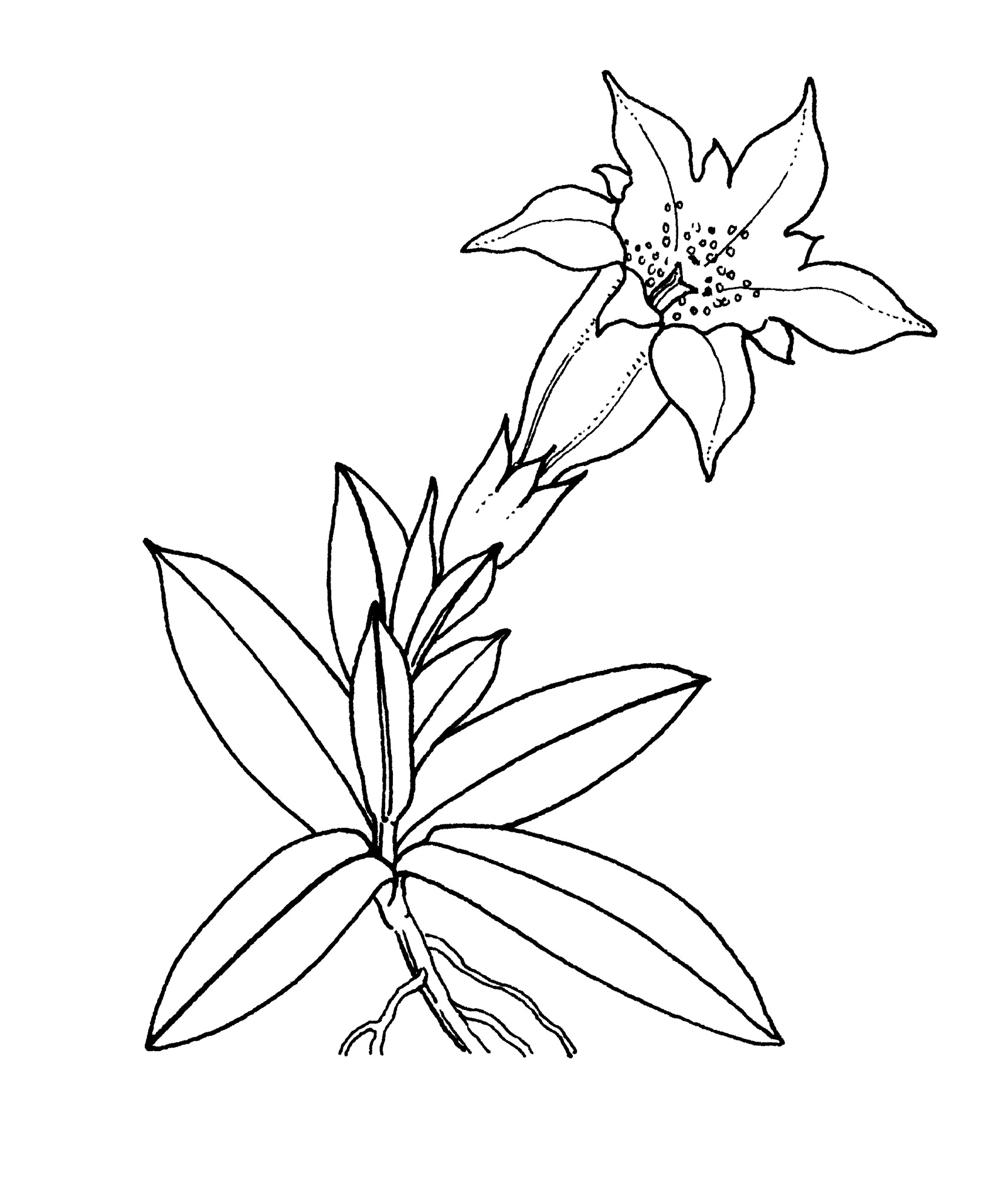
Annual, biennial or perennial herbs, occasionally shrubs or small trees; stems winged. Leaves usually simple, opposite, decussate, entire, generally with glands at stalk base; stipules absent. Flowers regular, bisexual, solitary or in branched clusters. Calyx mostly tubular, 4-5-lobed, the lobes overlapping. Corolla tubular to bell-shaped, lobes 4-5(6), often pleated longitudinally. Stamens the same number as the corolla lobes and alternating with them. Ovary superior, with 1-2 chambers and parietal or axile placentation; ovules numerous. Fruit a septicidal capsule containing many seeds, rarely a berry.
Grown for the spectacular bell-like or funnel-shaped colourful flowers. In the northern hemisphere gentians are popular as alpine herbs and in the southern hemisphere as dry-climate subshrubs.
Centaurium erythraea Rafn and C. tenuiflorum (Hoffmanns. & Link) Janch., Common and Slender Centaury, are pink-flowered annuals and biennials from Eurasia that are widely naturalised, the former being a common weed in gardens and along roadsides.
Some species have medicinal properties, such as in Canscora and Gentiana (bitter chemicals are extracted from the roots and rhizomes); Fagraea is used for timber.
Stems winged; leaves generally with glands at the base; flowers often with folds between the petal lobes; stamens 4-5 and fused to the petals; ovary superior, of 2 united carpels.
About 78 genera and 1225 species, cosmopolitan but mostly temperate and subtropical, a few tropical montane species. Australia has 6 genera and 14 species.
Source: (2002). Gentianaceae. In: . Horticultural Flora of South-eastern Australia. Volume 4. Flowering plants. Dicotyledons. Part 3. The identification of garden and cultivated plants. University of New South Wales Press.
